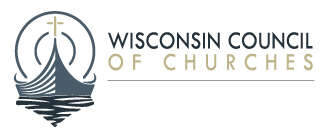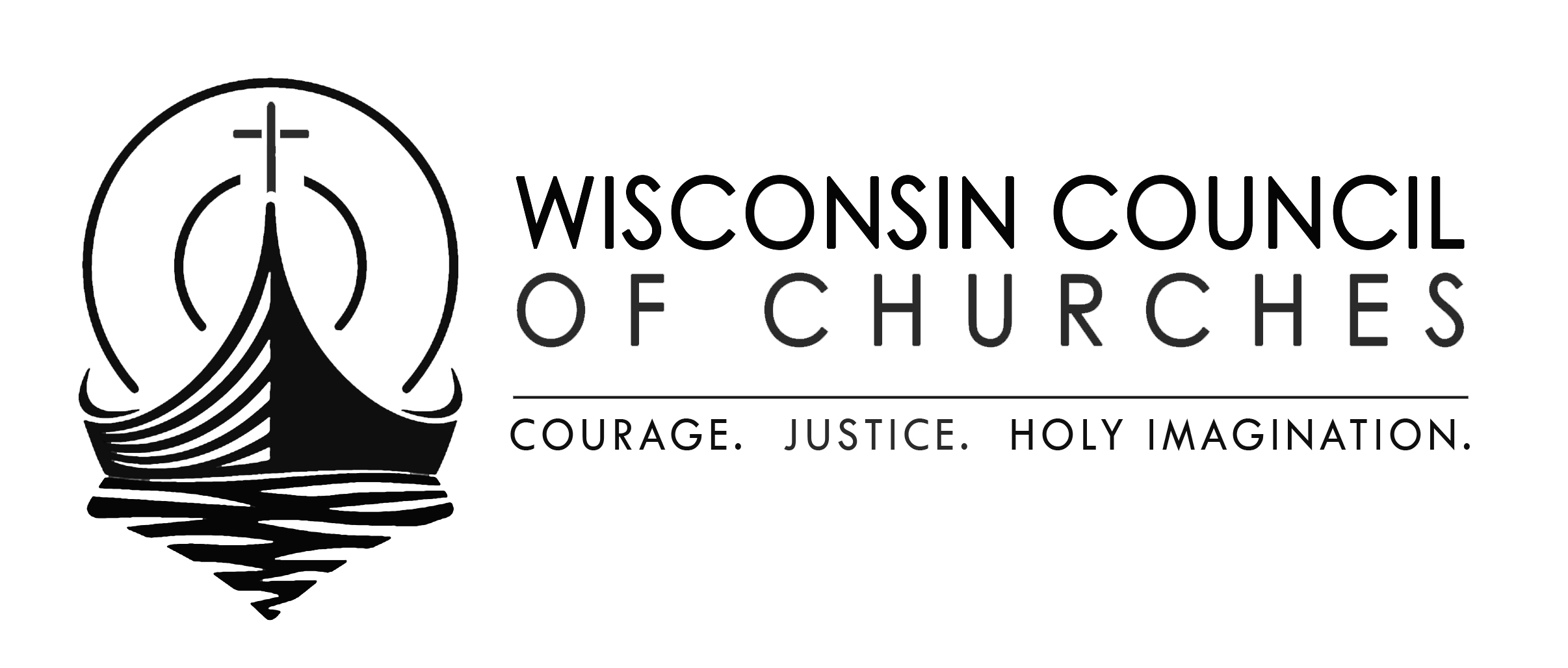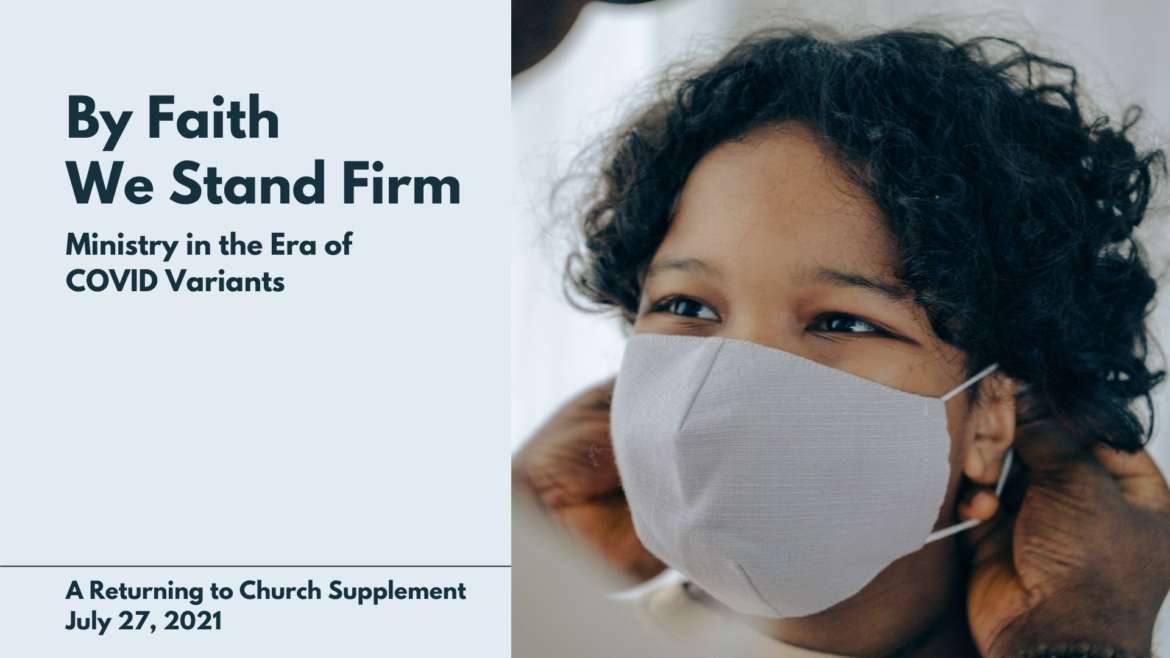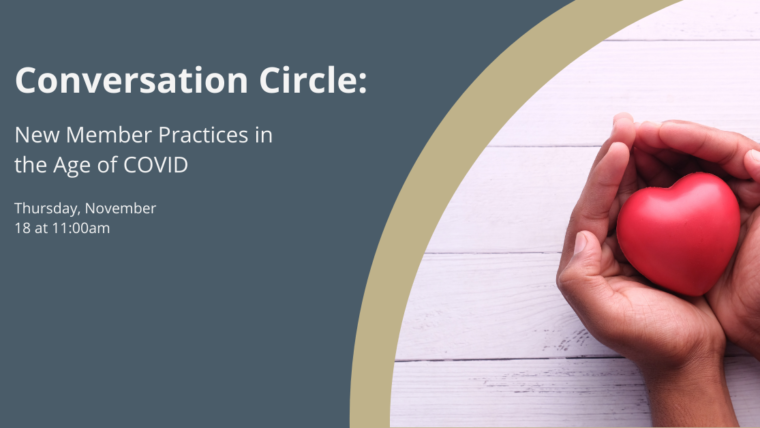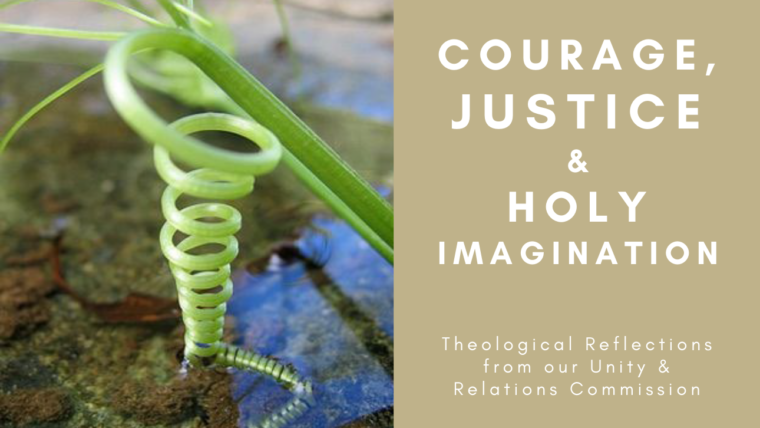Blessed be the God and Father of our Lord Jesus Christ, the Father of mercies and the God of all consolation, who consoles us in all our affliction, so that we may be able to console those who are in any affliction with the consolation with which we ourselves are consoled by God. – 2 Corinthians 1:1 (NRSV)
INTRODUCTION
By Faith We Stand Firm is a continuation of the Wisconsin Council of Churches’ ongoing guidance to churches for how to make safer choices during the COVID-19 pandemic. We say safer choices, because no choice is definitively safe. We can only mitigate risk, not eliminate it altogether. This document builds on the recommendations contained in Returning to Church 2.0, released in January 2021 and its successor documents Bearing with One Another in Love and Love Builds Up, released in spring 2021.
We note several circumstances necessitating a more comprehensive update to our guidance:
- A decline in the number of COVID cases almost to the threshold of “Safer” or “Safest” levels in our earlier guidance in early summer, followed by a rapid increase in cases in midsummer due in large part to the delta variant.
- Societal pressure to return to what seems normal and familiar.
- Stagnation in vaccination rates at approximately 50% of the population, with notable disparities by race, age, and other personal characteristics.
- The rapid escalation of the delta variant of COVID to be the predominant strain in Wisconsin, with increased transmissibility and impact upon the unvaccinated, as well as an uptick in breakthrough infections among the vaccinated.
- Significant turnover in clergy leadership due to the stresses of ministry in the time of COVID, including difficulty accessing support from extended family and other communities of care where they are in ministry. A refresher on the fundamentals of ministry safety during COVID for every community is timely. Support and mutual trust is vital if we are to prevent rapid turnover and the exit of even more clergy from ministry in the years to come.
CURRENT RECOMMENDATIONS
1. We recommend prioritizing life and health of the vulnerable as a Gospel witness. Concurrent values of this guidance include urgency and care in meeting human needs, and attending to equity and accessibility. Take seriously the church’s role as community leader, and trust in the resilience of the church.
2. Maintain masking expectations FOR ALL PERSONS indoors and when not distanced outdoors until COVID transmission is very low in the community. Although vaccination protects us well against serious illness, breakthrough infections do happen, and viral shed of the delta variant can be as high among the vaccinated as among the unvaccinated.1 This means universal masking is warranted even among the vaccinated.
If your church is gathering for worship outdoors, and you are not providing for distancing, we recommend that you make wearing face masks a standard for all. Being outdoors is not automatically protective against illness if you are in a crowd and are re-breathing the same air others have exhaled.
3. Reinforce your COVID safety protocols in response to the more transmissible COVID variants. Are people wearing face masks properly over nose and mouth? Are singers placed far away from the congregation? Are riskier activities taking place outdoors instead of indoors? Worship leaders may choose to remove their masks when presiding for the sake of accessibility, but we do advise that they wear their mask when they are not actively leading.
Remember the benefits of layered mitigations!

- Case tracking and establishing a No-Go threshold:
The CDC maintains a data tracker by county showing community transmission. If reliable sources show community transmission as “high” or “substantial,” we advise high levels of caution in church gatherings and any activity which might expose vulnerable members to illness.2 You could also look at the state DHS tracker and use “high” activity levels to consider a “no-go” threshold.3 Remember that statistics go in both directions – we have been privileged to experience a decline for many months in Wisconsin, but with the development of more transmissible variants, we are beginning to see increases. At what point will your faith community resume online-only activities, or set a policy of leaders-only in the building? We recommend being proactive and putting a plan in place now rather than having to make and communicate hasty decisions. Our ongoing standard for unsafe/safer/safest gatherings is built on a seven-day rolling average of new cases per 100,000 population, and the rates of positive tests. Our safer threshold for gathering is when cases are less than 5 per 100,000 population and positive tests less than 10%. Safest would be even lower.4

- Maintain virtual/hybrid gathering options as much as you can. This is a hard-won capacity for many churches; it is worth maintaining. It may be necessary to switch to gathering the community remotely in case of inclement weather, dramatic spikes in viral activity, or future public health crises. In any case, vulnerable people should not be forced to choose between participating in the life of their community and their own safety.
- Witness to the truth that sets us free (John 8:32). Help debunk misinformation and disinformation about COVID and vaccination. Speak up when segments of the population are scapegoated or bullied as spreaders of illness. Help people come to a sound, informed, faithful decision on matters of importance.
- Support vaccination efforts. The church has an important role in helping to ensure that everyone who wants to be vaccinated has ready access. Explore how you can work with your congregation, mission and service efforts, and wider community to reach those who have obstacles to vaccination.
- Plan on event modifications, mitigations and protective behaviors for many months to come. As much as we long for a different truth, the pandemic is far from over.
GIFTS OF HEALING BY THE ONE SPIRIT: THEOLOGY & VACCINATION
‘Through medicine God ‘provides us with the capacity to attend to our illnesses.’
—Jean Calvin, as quoted by J. Todd Billings
Introduction & Context
While the easing of COVID-related restrictions in public life was welcome news for many Americans longing for a return to the familiar, the pandemic is not over, nor is the work of protecting those who are vulnerable to disease finished. The development of COVID variants has been exacerbated by inequities in health care, widespread misinformation and disinformation, and complacency. In this time and circumstance – as we have in the past – Christian churches have crucial work to do in seeking health and wholeness for all people, working to establish equitable and inclusive practices, and promoting truth. The church is especially called to this role. We are seekers of justice, advocates for the vulnerable, compassionate ministers to those in need, knowledgeable connectors, leaders, and trusted messengers. Working in coalition, we are able to leverage the resources of broad relationships to do what neither secular organizations nor the church can do well on their own: reaching deep into communities to deliver care, support, and relief.
Overall statistics have helped us feel positive about our progress: the majority of eligible Americans are fully vaccinated. However, unequal access means that certain communities have less protection against the virus than others. Among those still vulnerable are young children and those who cannot be vaccinated for medical reasons; people living in some of the most impoverished communities; some black, brown, and indigenous communities; and others who may distrust government and medical professionals, some for historical reasons.
We also know that churches and other community groups have been under tremendous pressure since the start of the pandemic, struggling to find ways to adapt to the situation, while in many cases facing resistance to COVID-safe practices. Many religious leaders are burned out from acquiring new skills to address constant change, managing grief and may themselves be nervous about the uncertain future of the church.
As infection rates dropped, pressure shifted to demands to reopen churches quickly and return to practices such as indoor worship and communal singing. Many authorities rapidly dropped their own emergency orders and requirements. New guidelines only intensified the pressure for churches to dispense with precautions altogether. Worse, some unvaccinated people quietly flout the rules, refusing to mask or social distance even when unprotected, creating dangerous gaps in coverage.
All of this takes place in the context of the rise of new COVID variants (some of which are much more infectious and potentially more lethal than previously-known strains), a politicized and increasingly rigid resistance to vaccination, and slowing vaccination rates. There is a long road ahead to getting COVID under control, while millions remain at risk, and energy for the vaccination effort fades. Even so, as disciples, we are sent out to proclaim the kingdom of God and to heal (Luke 9:2).
Biblical & Theological Foundations
The social teachings of the Greek Orthodox church instruct that “being made in the image and likeness of God, each person is unique and infinitely precious, and each is a special object of God’s love.5” These teachings are echoed in other Christian traditions.
Because each life is precious to God, it is incumbent upon Christian communities to work for equitable access to health services. This will require ongoing commitment and solidarity with communities who lack such services. It may involve work to build and strengthen existing community health providers, creative initiatives to micro-target services to individuals not easily served by standard solutions, and partnership with government agencies and secular coalitions to meet concrete and effective goals. In this, the church can draw on its long history of organizing and promoting healthcare through parishes, clinics, and hospitals, and on an equally rich tradition of providing care through feeding, clothing, and hospitality ministries.
Faith communities are of course also called to witness to the world and to make disciples through worship, education, and other forms of gathering as the body of Christ. As they return to meeting in physical space, churches of all varieties should maintain the practice of reflecting and modeling the love of God as informed by thoughtful, well-informed, and medically sound advice.6
Religious communities must not shift the burden of taking precautions to stay healthy from those who will not get vaccinated to those who cannot be – such as young children, the immunocompromised, or others who can’t take the shot. It is inappropriate for congregations to drop reasonable precautions hurriedly or without careful consideration. Members should be educated not to be dismissive or insensitive to the needs of others (cf. 1 Corinthians 8:1-13). Particularly in small communities—which describes most churches—there is an inescapable all-or-nothing aspect to the situation. Vulnerable people should not be forced to choose between participating in the life of their community and their own safety. This includes many of the people churches claim to care for the most: the sick, the elderly, the same children Jesus instructed his followers to allow to “come to me (Matthew 11:28, Luke 18:16).”
The path through the COVID-19 pandemic has been marked by incomplete, misunderstood and sometimes misleading information. Worse, COVID and vaccinations to protect against it have been the subject of multiple conspiracy theories and political contention. Steering through this challenging pathway is necessary in order to protect God’s beloved community, but also to witness to the truth that will set us free (John 8:32). Pastors and lay leaders can witness to this truth in example, by being vaccinated and making it known publicly. Peers in church communities are particularly effective in being “trusted messengers” who can listen to vaccine concerns, deliver appropriate and reliable information to other members, and motivate them to take action on vaccination. Likewise, churches can be highly effective in distributing information to the wider communities to counteract misperceptions and falsehoods. In many areas, both urban and rural, the church may be the best— or only—organization suited to this work.
Just as important, churches can witness to the truth not only by how they speak, but by how they listen (Luke 10:16). Religious communities have experience of creating grace-filled spaces to listen to thoughts, fears, doubts, anxieties and prayers, to hold them in their common life to allow their members to discern their path forward. As a practical matter and as a reflection of faith, the decision to be vaccinated or not must always be a free choice. Churches, as places in a divided society where individuals can encounter and form friendships with people very different from themselves, are again uniquely positioned for this role.
The church, it is often said, is called to be “in the world but not of the world” (1 John 2:15-16). This can mean forming a resistance to the evils of the world. But in a situation such as the one we face, it can also mean finding ways to mediate the resources of science, medicine, and government, connecting them in mission to people in need. This practice has long been an expression of Christian faith. We have a role in calling society to care for people above profit, policies, and systems. COVID-19 and vaccination simply require the church to find new ways of doing what it has done all along.
Invitation to Action
Consider taking these or similar steps in your community of faith:
- Settle in for the long haul, develop flexible plans, and encourage others to do the same. It could be another year before social distancing and masking precautions can be completely lifted, and years beyond that until the virus which causes COVID-19 is finally of little risk to most. In the meantime, new variants and unforeseen events could cause new surges in infections, hospitalizations, and deaths. We are unlikely to experience continual forward progress. Patience and caution will be virtues in the years ahead.
- Educate yourself about common questions about vaccination and concerns that people may have. See below for resources.
- Educate your community. Include solid, reliable information in your newsletter and social media accounts, and/or consider hosting a Question and Answer session for people in your area.
- Host a vaccine clinic at your church with a focus on community outreach, especially during evening or weekend times—a very common barrier to vaccination is the inability to take time off from work. If your community is in Wisconsin, you can ask to be matched with a vaccine provider through the state, or contact our COVID Vaccine Outreach Team.
- Create a team to build empathetic listening skills, and to put these skills into practice in your community. Shaming and blaming seldom lead to productive conversations. Prepare to enter conversations from a place of openness, listening, and grace.7 https://www.wichurches.org/2021/04/21/covid-19-vaccine-outreach/
RESOURCE LINKS
Resources on Vaccination
- Sign up for WCC’s weekly e-newsletter on vaccination efforts.
- WCC’s COVID Vaccine Outreach Program
- COVID-19 Wisconsin Summary Data
- COVID-19 Wisconsin Vaccine Summary Data
- Guidance for Faith-Based and Community Groups on hosting vaccine clinics
- Vaccine Campaign Resources and Toolkits (available in several different languages or tailored to particular communities)
WCC Resources: Including earlier editions of “Returning to Church”
Some details may be out of date but there are still helpful resources within
- WCC Returning to Church Page includes latest guidelines and statistical updates
- Love Builds Up: A Returning To Church Supplement 5/13/21
- Bearing with One Another in Love: A Returning to Church Supplement 4/16/21
- El Amor Edifica: Un suplemento de “Regreso a la Iglesia”
- Holding Our Plans Loosely: Returning to Church 2.0
- WCC COVID Resources Index with curated links
Some Reliable Data Sources
DHS-WI COVID Data
NY Times COVID Data Summary
Pandemics Explained: COVID Risk Levels
CDC
Georgia Tech COVID Risk Calculator
Some Reliable and Helpful Information Sources
- CDC COVID Information
- CDC Considerations for Communities of Faith
- CDC Vaccination Info
- Center for Infectious Disease Research & Policy (CIDRAP)
- Osterholm Update
- World Health Organization
- Social Media Handles for Government Information – WHO, CDC, FDA, HHS, NIH
- Equal Employment Opportunity Commission (EEOC) *You can require your employees to be vaccinated, subject to medical exceptions.
- Occupational Health & Safety Administration (OSHA)
- Society for Human Resources Management on vaccination
Webinars and Videos
- Doing Theology in Pandemics Virtual Conference
- Project Recovery: Helping WI Meet Emotional Needs
- Vaccine Panel Discussion (Mt. Zion Baptist Church, Madison)
- Youtube Channel
This document was developed by Wisconsin Council of Churches staff with input from religious leaders, local church pastors, and public health experts. This is neither a formal policy statement of the Council, nor a formal theological statement, and does not necessarily reflect the views of member organizations. This document is based on the most recent science available to us at the date of publication. We recommend that you consult your ecclesiastical authorities for final guidance. Released July 27, 202
